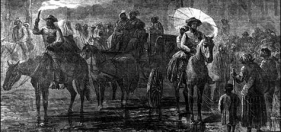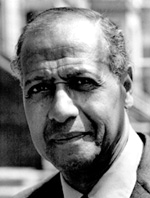
by Sandy | Jun 6, 2016 | Blogroll, Exhibits, Museums, Photograhy
“Bruce Davidson (American, b. 1933) is one of the most influential photographers of the last half century. Working in both color and black and white …Davidson is known for his humanist outlook and a desire to engage directly with his subject matter, approaches that owe much to his early artistic influences in photography, including Robert Frank, W. Eugene Smith, and Henri Cartier-Bresson.”
“Bruce Davidson: Gifts to the Collection”
Until September 11, 2016
De Young Museum, Golden Gate Park, San Francisco, CA
(Image: “England/Scotland”, 1960)
***

by Bob Martin | Mar 2, 2016 | Books, Creativity, Education, Photograhy
Today I got the chance to meet Stephen Marc again and to see his incredible book of photo montages and composites “Passage on the Underground“. Talking with Stephen is inspiring, full of lessons and new understanding about the history of the African in America.

OLYMPUS DIGITAL CAMERA
While on his Underground Railroad explorations, Marc’s experiences include:
- Discovering a long-lost false grave that was the exit from an escape tunnel for fleeing slaves. Though the exit had never been found by the local Underground Railroad historians, Marc’s fresh eye led him to what is now believed to be the solution to a 100-year-old mystery.
- Visiting a house long ago owned by a conductor on the Underground Railroad, Marc talked his way in to photograph it during renovations, because he knew the amazing story of two escaped slaves who hid in the rafters, right above the heads of their would-be captors, who searched the house and left without finding them.
- A connection with a New York community college in Jamestown, home of Catherine Harris, a conductor on the Underground Railroad. When Jamestown Community College attempted to purchase some of Marc’s work that was on display, he volunteered to create a custom piece that reflected the community’s connection to the Underground Railroad…. Passage on the Underground
Stephen shared with us a little about his next project. He is a man on a mission. He is available to speak with young people, especially middle graders, about Slavery, The Underground Railroad and African American History in General. He can be contacted via Arizona State University in Tempe AZ
(Originally posted on 2/6/2010)
***
by Sandy | Feb 14, 2016 | Arts, Entertainment and Music, Blogroll, Museums, Photograhy

The Art Institute of Chicago showcases the work of: “Alfred Stieglitz (American, 1864–1946) tirelessly promoted photography as a fine art. Through his own photographic work over the course of a half-century, the photographic journals he edited and published, and the New York galleries at which he organized exhibitions of photographs, paintings, and sculpture, Stieglitz showed photography to be an integral part of modern art in America. In a search for artistic ancestors, he looked intently at photography of the 19th century, most notably that of Julia Margaret Cameron and the Scottish duo David Octavius Hill and Robert Adamson. Their work resonated for Pictorialism, a movement that valued painterly, handcrafted images, and these earlier photographs were exhibited and reprinted for new audiences.“
“Alfred Stieglitz and the 19th Century”
Until March. 27, 2016
The Art Institute of Chicago, 111 South Michigan Avenue, Chicago, IL
***

by Sandy | Aug 27, 2015 | Art, Artist, Blogroll, Culture, Photograhy

Roy DeCarava, 1919 – 2009, left behind a treasure trove of black and white images spanning over 6 decades. He captured images of the famous of the day, Paul Robson, John Coltrane, however, his pictures were usually of the regular inhabitants of Harlem and their everyday life. DeCarava said that “black people in America were not viewed as worthy subject matter” for art but rather were usually “portrayed either in a superficial or a caricatured way or as a problem.” … he wanted to achieve “a creative expression,” not a “documentary or sociological statement.”
Harlem born DeCarava encouraged and influenced the work of many black photographers over the years. He was the first African American to win the Guggenheim Fellowship in 1952 and was awarded a National Medal of Arts in 2006. He collaborated with poet Langston Hughes, another Harlem native, for the acclaimed book, “The Sweet Flypaper of Life” in 1955.
(Image: “Man Coming Up the Stairs”, 1952)
***
by Sandy | Aug 17, 2015 | Blogroll, Exhibits, Museums, Photograhy

“In 1948, Gordon Parks (1912–2006) became the first African American photographer to be hired full time by LIFE magazine… In 1950, Parks returned to his hometown in Kansas to make a series of photographs meant to accompany an article that he planned to call “Back to Fort Scott” …focusing on the realities of life under segregation during the 1940s, but also relating to Parks’ own fascinating life story. “
“Back to Fort Scott”
Until September 13, 2015
Museum of Fine Arts Boston
Avenue of the Arts, 465 Huntington Ave., Boston, MA
(Image: Mrs Jefferson, Fort Scott, Kansas, 1950)
***
by Bob Martin | Aug 6, 2015 | Art, Artist Residencies, Culture, Photograhy

nyc subway “What the future looks like…” Photo Cybel Martin
Art rejuvenates cities and gives them new vitality. Large cities are where you get to see what the future is like. Cities are the most fun just before they are recognized as being fun, before the big bucks move in trying to buy the culture up. Culture is like an ocean, it goes where it wants and ignores the concept of money.
Cities are transformational experiences
Public transportation, like New York’s Subway is the best way to get around in a city, where your imagination is brought to life, where you can hear your own heart beating in sync with everyone else’s and where you are confronted with everything that is not you. Cities are where you can see the diversity of our young people and imagine the future.
Culture is like an ocean, it goes where it wants and ignores the concept of money.
A strong artist community can bring a city back to life.
Detroit is one of those cities that is poised for a creative comeback. Everything is in place. Those that left could not take with them the city’s creative possibilities. Those that stayed have to be hungry about making a positive difference otherwise they too must leave and make space for the dreamers.
***








